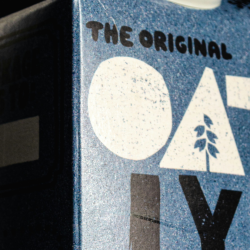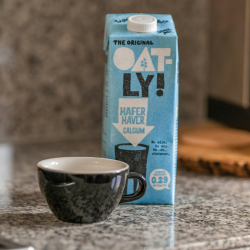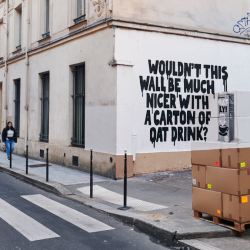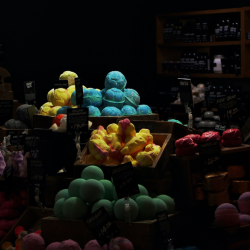Why is Oatly such a success?
Does it have a unique brand vision? a ‘brand purpose’?
Has it ‘disrupted’ its category?
Not really. ‘Saving the planet’ may be a sound platform for a plant-based milk substitute, but it’s hardly original. Its dull pastel colour palette, potato cut lettering and typewriter font have been the staple codes of this genre of product for decades. Its twee, self-referential ‘tone of voice’ was done first (and perhaps better) by Innocent. And fully 60% of the brand name is nothing more than its generic ingredient.
No, like most successful brands (if not all of them), Oatly is a storming success, not because of what it is or what it looks like, but because of what it’s done.
Push and push
A relation of ‘Doc’ Pemberton, the inventor of Coca-Cola who sold the business to Asa Candler, once ruefully remarked:
‘Coca-Cola became a go because it was pushed and pushed by an energetic man. If the Pembertons had not sold the formula it probably would have stayed in an old drink somewhere and been lost in time.’
Nearly one hundred and forty years later, Oatly has ‘become a go’ for pretty much the same reason. In this case, the energetic man is called Toni Petersson.
Invented back in the mid 1990s, Oatly remained a tiny niche product in Sweden until Petersson took over as CEO in 2012. He had no packaged goods experience, but he had built several successful businesses, including a chain of restaurants. And he had played in a band.
Petersson used all his skills as entrepreneur and performer to make Oatly famous. Without a massive ad budget, he picked fights with the dairy industry which made headlines. (The more recent controversy, when some UK ads were banned by the ASA for making unsustainable claims, is merely a continuation of this strategy.) As the brand and budget grew, he took a spot in the Super Bowl, and personally sang an eccentric song about the product.
Many ridiculed it, but everyone talked about it. At the same time he sold Oatly into as many different outlets as possible, at a price point that makes its cash margin far more attractive than milk. In short, he followed Byron Sharp’s simple formula in How Brands Grow — build physical and mental availability together.
That is very similar to what Asa Candler did for Coca-Cola in its early years (as I have argued in Why Does the Pedlar Sing?, p.96). There’s another parallel too. Coca-Cola was beset with literally dozens of competitors with similar names – Cola-Coca, Cafe Cola, Kola-Kola, etc. So they hired a lawyer, Harold Hirsch, who remorselessly took them all to court and won. Other brands soon learned not to do anything that would risk a copyright infringement.
Oatly has had a lot of flak for suing a Lincolnshire farmer with a similarly named product. People complain that this behaviour sits ill with Oatly’s ‘persona’ as a caring, alternative, hippy brand. They are missing the point. Oatly’s success is not based on any such persona, but on having much more energy and sometimes ruthlessness than its competitors. (Oatly didn’t win this particular case, but they have made their intentions clear enough all the same – ‘don’t mess with us’.)
The great showman Phineas T. Barnum once claimed he had done nothing fundamentally different from his competitors, but that he had done it all with ‘more energy [and] far more ingenuity’. It’s all very well to have a ‘brand positioning’, ‘personality’, or even ‘purpose’; but far more important than any of these are energy, ingenuity, and the mindset of an impresario and entertainer. These are the qualities Toni Petersson has brought to Oatly, and as long as he has more of them than his rivals the brand is likely to go on winning.



































